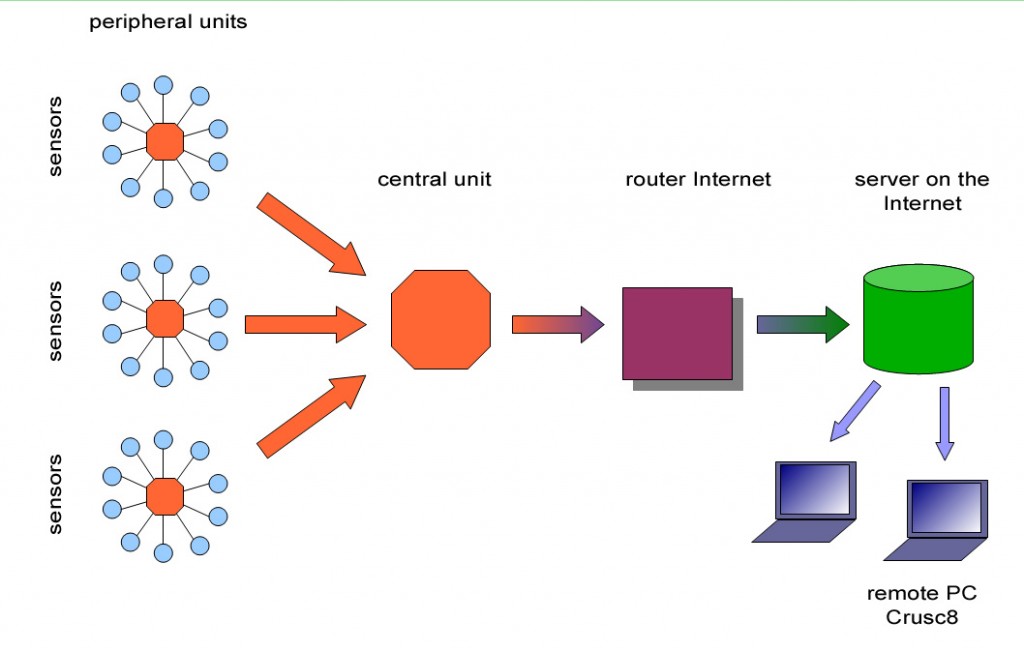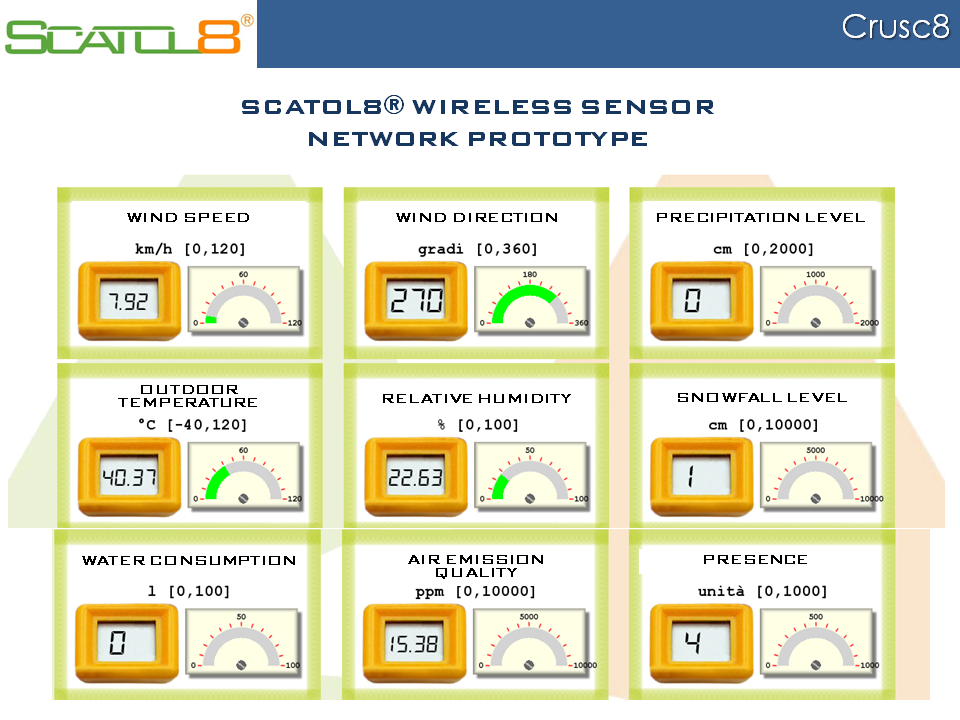The Scatol8® is a remote sensing network of environmental, landscape and management variables, created at the Department of Commodity Science, entirely based on free and open technology (hardware and software) (Open Source), with a view of controlling costs, of openness and ease of access. The choice of the name Scatol8® conveys the idea of a friendlydevice, handmade, easy to understand and easy to use, so affordable.
Scatol8® consists of a central unit and of peripheral (end) units, connected in a network. Numerous sensors, able to detect the monitored variables, are connected to peripheral units which transmit the data to a central unit, connected with a server. Sensors and peripheral units change in type and numbers depending on customers’requirements. Collected data are transmitted to a personal computer, where they are stored, processed and displayed by an instrument digital panel, called the Crusc8.
 Thus, you can create a real-time monitoring of each measured variable, as well as evaluate their performance over time, thanks to the display of time series. In turn, the personal computer is able to upload data on a server on the Internet; the server collects and organizes them in a collective database. Data can be input for environmental management systems and/or for actuators (i.e. a wide range of devices, from leds to motors).
Thus, you can create a real-time monitoring of each measured variable, as well as evaluate their performance over time, thanks to the display of time series. In turn, the personal computer is able to upload data on a server on the Internet; the server collects and organizes them in a collective database. Data can be input for environmental management systems and/or for actuators (i.e. a wide range of devices, from leds to motors).
The Crusc8 allows a real-time monitoring of each measured variable, as well as evaluating their performance over time, thanks to the display of time series.
 The Scatol8® is a remote sensing network of environmental, landscape and management variables, created at the Department of Commodity Science, entirely based on free and open technology (hardware and software) (Open Source), with a view of controlling costs, of openness and ease of access. The choice of the name Scatol8® conveys the idea of a friendly device, handmade, easy to understand and easy to use, so affordable.
The Scatol8® is a remote sensing network of environmental, landscape and management variables, created at the Department of Commodity Science, entirely based on free and open technology (hardware and software) (Open Source), with a view of controlling costs, of openness and ease of access. The choice of the name Scatol8® conveys the idea of a friendly device, handmade, easy to understand and easy to use, so affordable.
Guidelines of Scatol8®
Designed in the perspective of sustainability, Scatol8® is inspired in its creation and implementation to various criteria, such as:
• Open Source. Hardware and software are fully based on open technologies and software (Open Source) in view of cost containment, openness and ease of access, even for training purposes;
• Modularity. The system is constituted from time to time, according to the requirements and specifications of each application;
• Environmental compatibility. All collection and processing devices are placed in recycled containers, coming mainly from food and electronics industry, transformed and adapted to their new function, or in containers made of wood (a renewable resource), or even cardboard.
• Knowledge dissemination. The Scatol8® is not only a product, but also an initiative to spread knowledge, which aims to involve young people in the creation of technology (and not only in its use), which is accompanied by information tools on the relationship between observed variables and sustainability and proposes the reuse of components through the concrete realization of the active systems.
